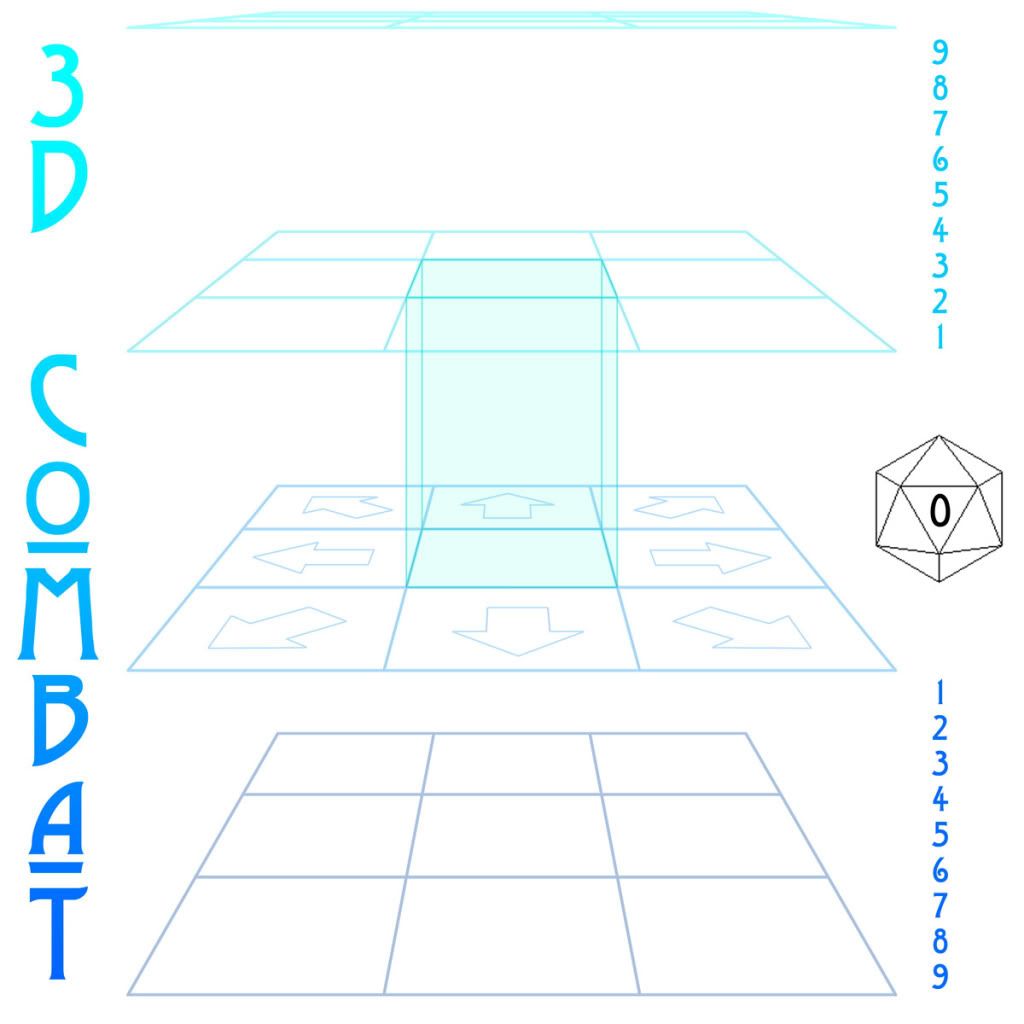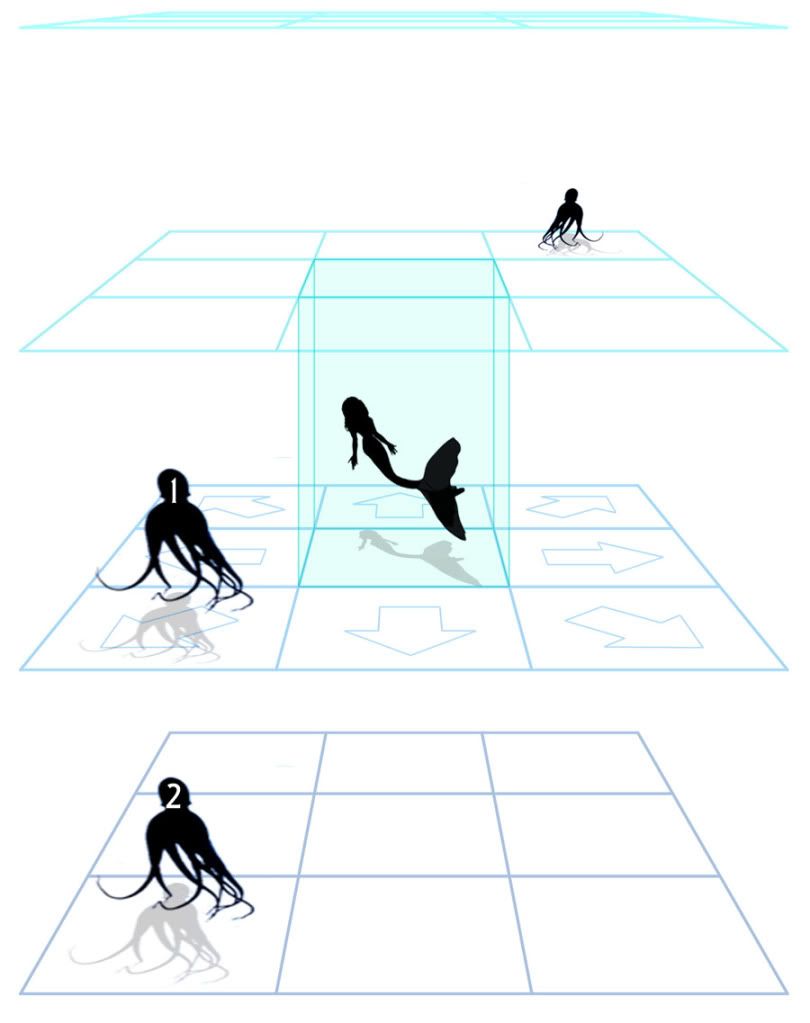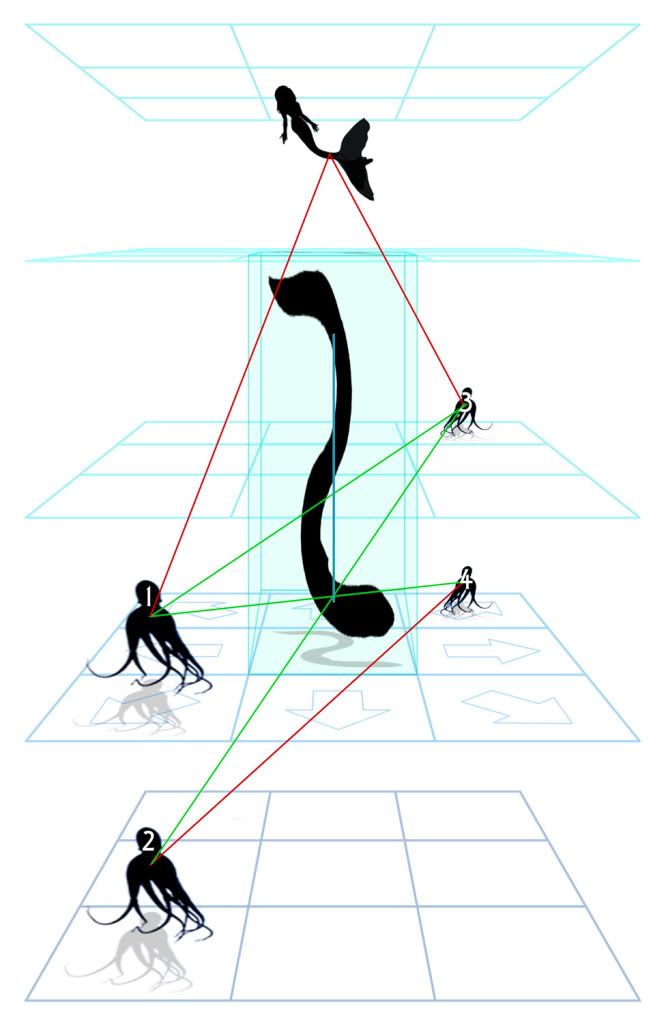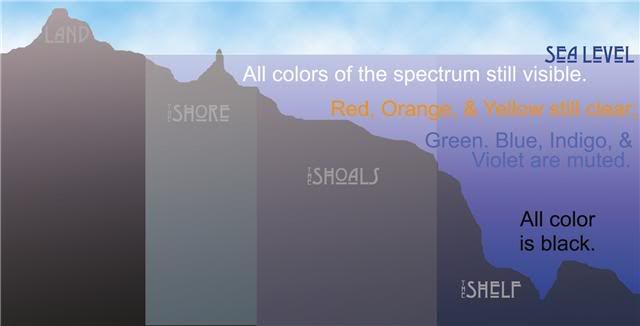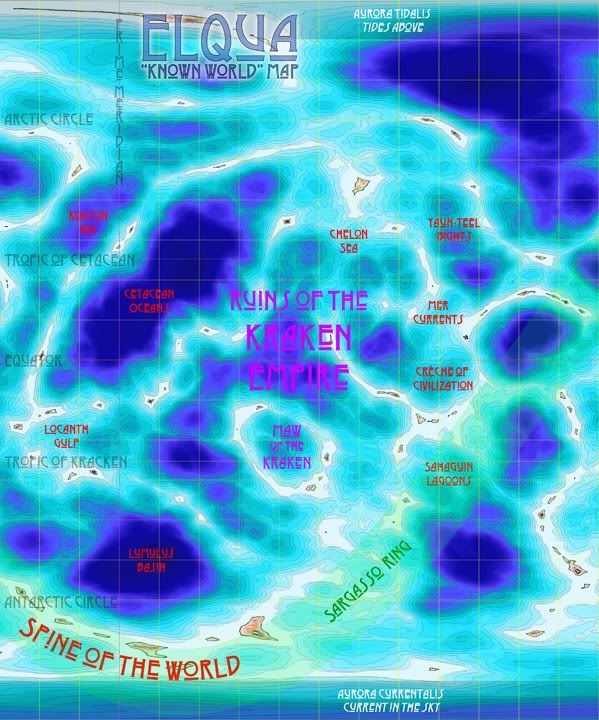Oceanography
There is a plethora of intelligence beneath the waves of Elqua, and like any peoples, they group together with their neighbors and form communities. Communities in the Endless Blue setting are defined by the body of water that holds the society, or “homesea”. While they may seem to consist of a single species, immigration over the centuries has not left a single one without some level of intermixing.
On this water world, the nations formed due to geological formations and historical conflict, and thus are now clustered around a central area in the Eastern hemisphere. With little knowledge of beyond its claustrophobic borders, this known world is broken down into three concentric divisions.
The Core
The Core is defined as the ruins of the Kraken Empire and the Crèche of Civilization. Once populated, the area is now considered cursed and blessed (respectively), and much of the politics of the aquatic nations revolve around either coveting or despising the Core.
The main geographical feature of the Core is the Maw of the Kraken, the actual homesea of the once mighty Kraken Empire. The borderseas around this area once belonged to other nations but was usurped during the Kraken Occupation. Now, even long after the fall of the invaders, the area around the Maw is avoided at all costs.
The Crèche is treated as holy waters, and nearly every race wishes to claim it as their own. It’ sea-beds are the richest in agricultural and mineralogical resources that, due to the contention between the races, remains nearly pristine from the era of the Icht Dominion.
The Periphery
The Periphery is comprised of the four civilized nations, which are clustered around the Core: the Cetacean Oceans, the Chelon Seas, the Lumulus Basin, and the Mer Currents. These nations have relatively favorable conditions for harvesting crops and raising livestock, and as a result are the more affluent nations.
The Hinterseas
The Hinterseas are the area loosely made up of the nations of the primitive races: the Kouton Bay, the Locanth Gulf, the Sahaguin Lagoons, and the Yaun-Teel Bights. They surround the Periphery, effectively corralling the civilized races inward towards the Core or each other’s territories. At the more climatic extremes, these nations have poor natural resources to sustain their peoples, and thus results in unavoidable poaching on the wealthier nations’ borders.
Bodies of Water
While nations maintain "no mer's seas" along their borders, this does not keep the natural encroachment of plants and animals across these imaginary lines. With the primitive races that still maintain a nomadic lifestyle, following the herds on their instinctive migrations sometimes brings them into territorial conflicts with the indigenous denizens.
Cetacean Oceans
To the north and west of the Kraken’s Maw, the Cetacean Oceans are a deep double-impact crater that is claimed to include the deepest point on all of Elqua. It is an expansive, fathomless place well suited for the Orcan race. The phytoplankton (the lowest link of the food chain for the entire world) in this area is plentiful and varied, enabling the Orcan peoples to turn inward into the craters in their quest for new feeding grounds. It is perhaps the best balanced area, with sufficient Shore, Shoal, and Shelf areas to keep the nation nearly autonomous and independent of imports from the other nations.
Chelon Sea
The Chelon Sea is nearly completely comprised of Shoals, a rolling sea-bed of rich silt and vital sediments. Its gentle, dependable currents keep the sea temperate even at its most northern places. Flora and fauna of the Chelon Sea is perhaps the most varied, if not the most beautiful, in all the world of Elqua. It is referred to by its people as nature’s utopia, where the inhabitants live in harmony with the surroundings. Here, amid the placid beauty, lies the Abyss, a sheer vertical drop in a vast plains area of the Shoals zone that stretches for miles.
Kouton Bay
To the north and west of the Cetacean Ocean, the Kouton Bay arcs around the Orcan homesea from the Locanth Gulf to the Yaun-Teel Bights. It’s deep, cold currents are rife with wildlife. The Bay of Kouton is the spawning waters for many of the main fish species that make up the diet of the civilized and primitive races alike.
Locanth Gulf
The Gulf of Locanth is the central populated area of the Locanth Gulf, and reaches northward to the Kouton Bay and southward to the Lumulus Basin. The most westward of the aquatic nations, it is here that the plant ricelqua was discovered, where it grows more prevalent than seaweed.
Lumulus Basin
The deep, concave basin populated by the Lumulus is riddled with thermal vents that become more and more frequent the further south traveled towards a particularly volcanic portion of the Spine of the World. With such little Shore and Shoal zones, agricultural imports are vitally important to support the Lumulite population. It is the only civilized nation that has an outer border not blocked by one of the primitive races, butting out between the Bay of Kouton and the Gulf of Locanth.
Mer Currents
Perhaps the most densely populated waters on Elqua, the various Currents of Mer are loosely banded together as a single nation. Bordering on the Crèche of Civilization, the Mer Currents benefit from species migration out of the untouched holy sea, and has allowed its tribes (each a “current” in the nation’s name) to explode with unparalleled success.
Sahaguin Lagoons
Located between the Crèche of Civilization and the southern ice cap, the Sahaguin Lagoons border on the ruins of the Kraken Empire and the Mer Currents. It follows the Shade of the Sargasso Ring – the area wrapping around the globe of Elqua where the planet’s green rings cast an emerald twilight – quite closely. It is comprised of a string of lagoons and other Shoal-level areas randomly dotted along the islands in that area. At its south-most point it is suddenly truncated by the frozen barricade that is the southern polar ice-cap.
Yaun-Teel Bights
The Yaun-Teel Bights neighbor the Chelon Sea and the Mer Currents to the north, and dip down towards the Sahaguin Lagoons to the east. Essentially barren due to the misuse at the hands of its own inhabitants, the Yaun-Teel resort to heavy raiding of the Chelon and Mer territories to sustain themselves.
What lies beyond the known world is a mystery. Until now, there has been plenty of room for the races of Elqua to grow and develop. A few – the brave, the ostracized, the insane – have traveled the seas beyond, but only tales and supposition remain as to what final fate awaited them.
